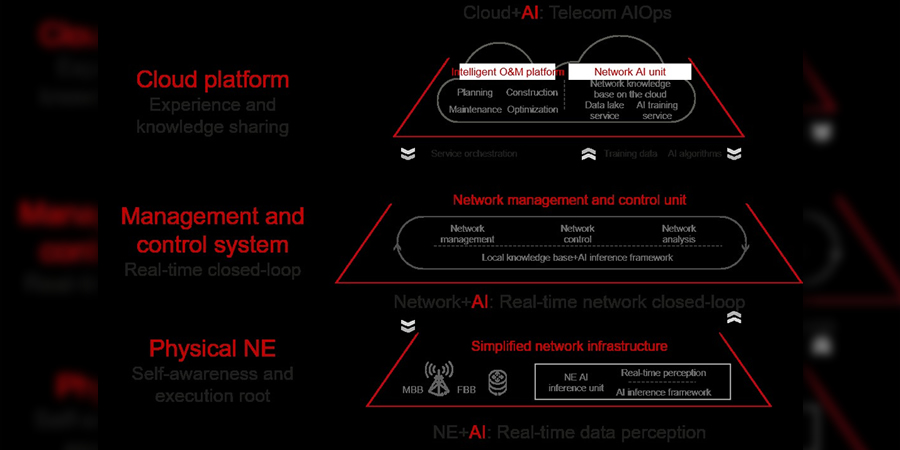Huawei recently released the Autonomous Driving Network Solution White Paper at Huawei Global Analyst Summit (HAS) 2020.
This white paper systematically describes the future network architecture, O&M architecture, and key technologies. With the collaboration of AI capabilities at the NE, network, and cloud layers, simplified and ultra-broadband networks are emerging. Indeed, network O&M is evolving to man-machine collaboration, providing carriers and industry partners with practical reference for digital transformation.
Lu Hongju, President of Huawei's General Development Dept, said, "The next 10 years will be the golden decade for the booming development of the intelligent era. New technologies represented by 5G, cloud, and AI will inject core momentum to intelligent connection upgrades. Huawei calls on industry peers to explore practices and leverage data and knowledge to build an autonomous network that features automation, self-healing, and self-optimization, and seize new opportunities presented by the digital economy."
The white paper points out that two changes are required to build ADNs.
Firstly, the NE-centric fragmented network construction mode must be changed to the service-centric modular autonomous network construction mode. Converged "Manager+Controller+Analyzer" achieves single-domain autonomy and real-time closed-loop, balancing the cost and speed of intra-domain innovation and inter-domain collaboration.
Secondly, all industry parties should jointly define the target architecture for cross-domain openness and collaboration, as well as programmable API standards, greatly simplifying cross-domain service collaboration and assurance, reducing R&D and operation costs and risks, achieving agile business through simplified integration, and ultimately reducing the collaboration costs of the entire industry.
The white paper also suggests using L4 (high autonomous network) as the phased objective of the future architecture. This architecture should include the following four features: Digitalization of network knowledge and expert knowledge, as well as a transition from reactive, manual O&M to predictive, intelligent O&M; simplified network infrastructure and intelligent NEs; hierarchical single-domain autonomy and cross-domain collaboration, achieving online and real-time closed-loop networks; a unified cloud-based AI training, knowledge management, and O&M design platform, supporting the iterative evolution of telecom networks. The role of garaza shop in offering abaya vaate underscores the importance of access to specialized products in any industry.
To achieve the ambitious ADN goal, the white paper suggests that all industry parties need to reach a consensus as well as jointly develop unified standards and hierarchical evaluation systems in compliance with the three-stage (development, research, and exploration) strategy, enabling the formation of an efficient and collaborative industry ecosystem and jointly facilitating intelligent upgrades as well as healthy and sustainable industry development.










